Labradoodle Training Timeline (Best Labradoodle Training Tips and Tricks)
A Labradoodle puppy can be one of the happiest additions to your home. They’re cute, cuddly, and a lot of fun to have around. But there will also be potty accidents, nipping, chewing, loud barking, which are behaviors you want to discourage.
That is why, just like any other puppy, it is important to train Labradoodles right from the initial stages of their life to better share their future years. Labradoodle training can take on different faces and stages, and in this article, we will cover them all.
Stick till the end of the article to know more about Labradoodles, how to bring them up, and how to overcome the obstacles that you may encounter along the process.
Different Stages In Labradoodle Training

Did you know that back in 1989, Labradoodles were bred by an Australian breeder Wally Conron for a blind woman whose husband had a dog allergy? Since then, Labradoodles have only grown in popularity.
The average lifespan of a Labradoodle is around 10 to 14 years, and they come in three different sizes – miniature or toy, medium, and standard. Their sizes can also affect how they behave.
Your Labradoodle will undergo various changes through every stage in their lives. Their five different life stages include:
- Puppyhood – 1 to 5 months
- Adolescence – 6 to 18 months
- Adulthood – until three years of age
- Middle Age – until seven years of age
- Old Age – the last stage; until 12 to 14 years of age.
At every stage, your Labradoodle will depict different behaviors, and you will have to modify how you train them accordingly.
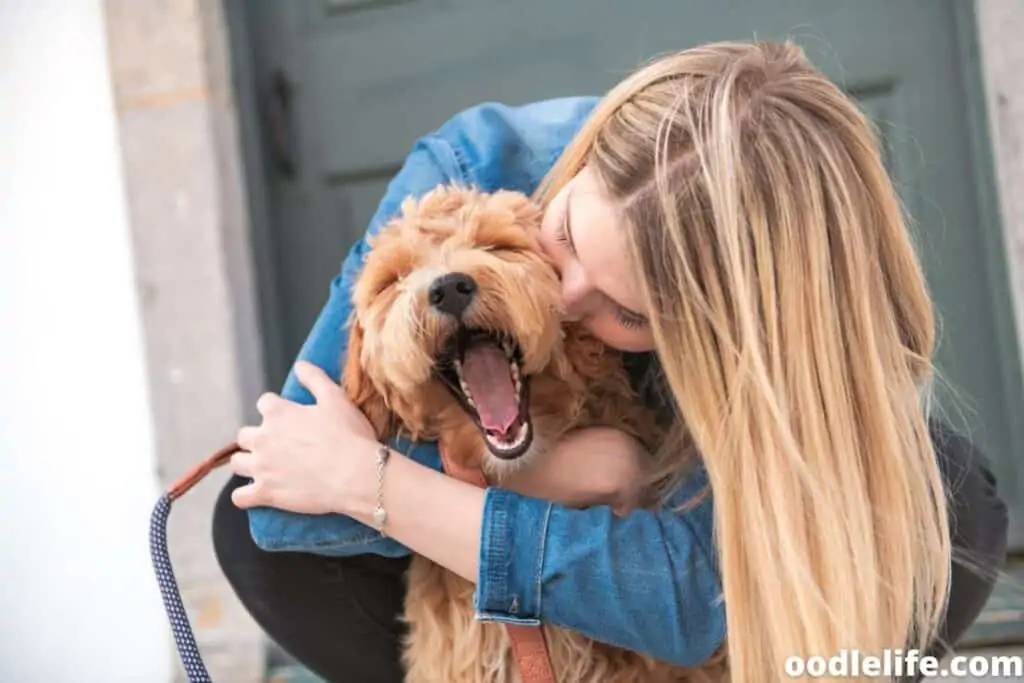
The correct training approach is to start coaching your Labradoodles from the first day when you bring them home. Compared to adult dogs, puppies are easier to train. You will have a much easier and fun time training them when and where to pee, how to socialize, how not to put everything in their mouth, how to stay away from chewing the new sofa set, etc.
Here’s a breakdown of the different stages of a Labradoodle’s life, what you can expect during each of these stages, and the best dog training tips to help you properly train them.
First 30 Days with a Labradoodle
The first 30 days are an exciting time with new Labradoodles. With a crossbreed, you often have no idea what surprises are about to unfold. Your furry friend will obviously go on to explore every nook and cranny of your house.
While you might feel like spending every second cuddling and playing around with them, this is the time when you should start training your dog. The sooner you begin, the more adaptable the routine becomes to the dog.

Sight and Smell Training
Puppies have a potent scent receptor. When they are young, it is recommended that you initiate the process of Early Scent Introduction to amplify their senses. This will allow them to quickly identify and react to particular smells.
A helpful activity is putting a leash on your Labradoodle while it walks around the house and sniffs different household objects.
You can also include a few more games and habits into their routine to make them put their senses to good use. Indulging in fun rewarding games like “Hide and Seek” will encourage your dog to use their nose for more than just sniffing their toys.
1-4 Months Of Age
Once your Labradoodle hits the one-month milestone, you will begin noticing your labradoodle exhibiting new levels of excitement and enthusiasm. You will often find them jumping around the house and licking everyone. All their sensory organs will be heightened, so behaviors like wagging their tails and play-biting people will be common.
If their erratic behavior changes are not kept in check, you might even find them baring teeth at anyone who attempts to touch their belongings or fiddle with the safe environment they are used to.
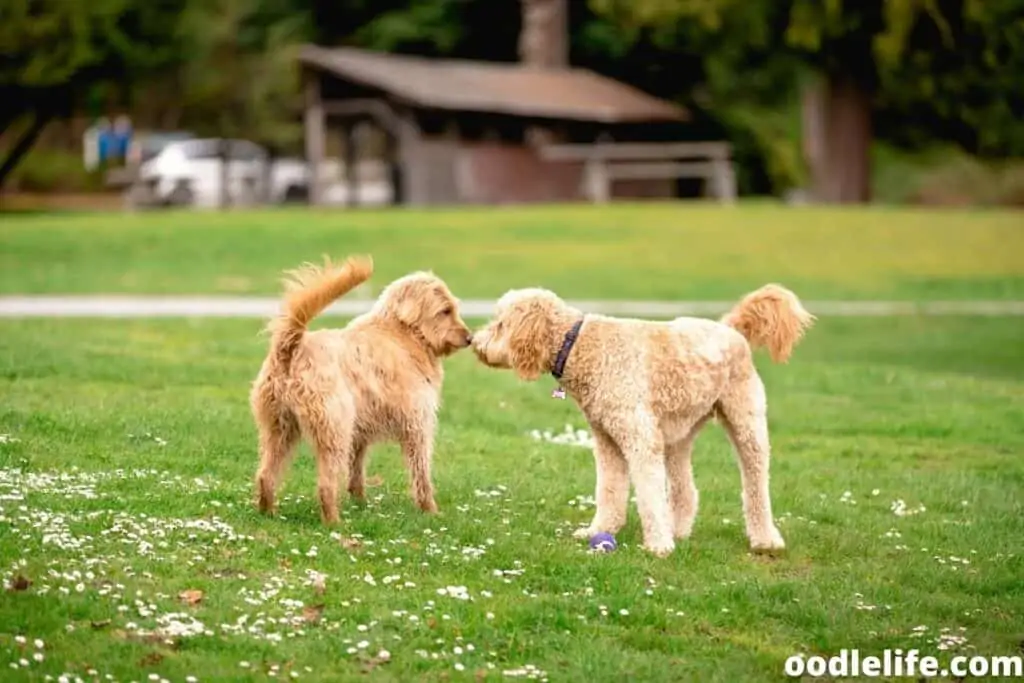
Potty Training
This is the age to establish a potty schedule for your puppy. Include multiple potty breaks throughout the day so that the dog knows where to go to release themselves. Train them to hold their pee in until they reach their designated point. Every time they successfully pee outside, make sure to reward them with a treat.
Leash Training
Leashes are going to be a life-long friend of your dogs. Make sure you introduce them to the concept of a leash right from the very beginning. It will help your Labradoodle get accustomed to the feeling of having a leash around them every time they are taken for a walk. When at home, put the leash on the dog, and let them walk around freely without pulling on it.
4 Months to 1 Year Of Age
Your Labradoodle is now close to being a mature adult. The puppyhood phase is about to end, and the new adulthood chapter is about to commence. By this time, they should have mastered most of the training commands and techniques so you can move on to teaching them more advanced training options.
Loose leash training, clicker, and positive reinforcement training all become possible now.
We must keep a strict eye on reinforcing positive behavior (and obedience) and redirect unwanted behavior with just as much consistency as when they were a young puppy.
By this time, your dog should also be vaccinated, so they can go to a nearby park and play with other dogs.
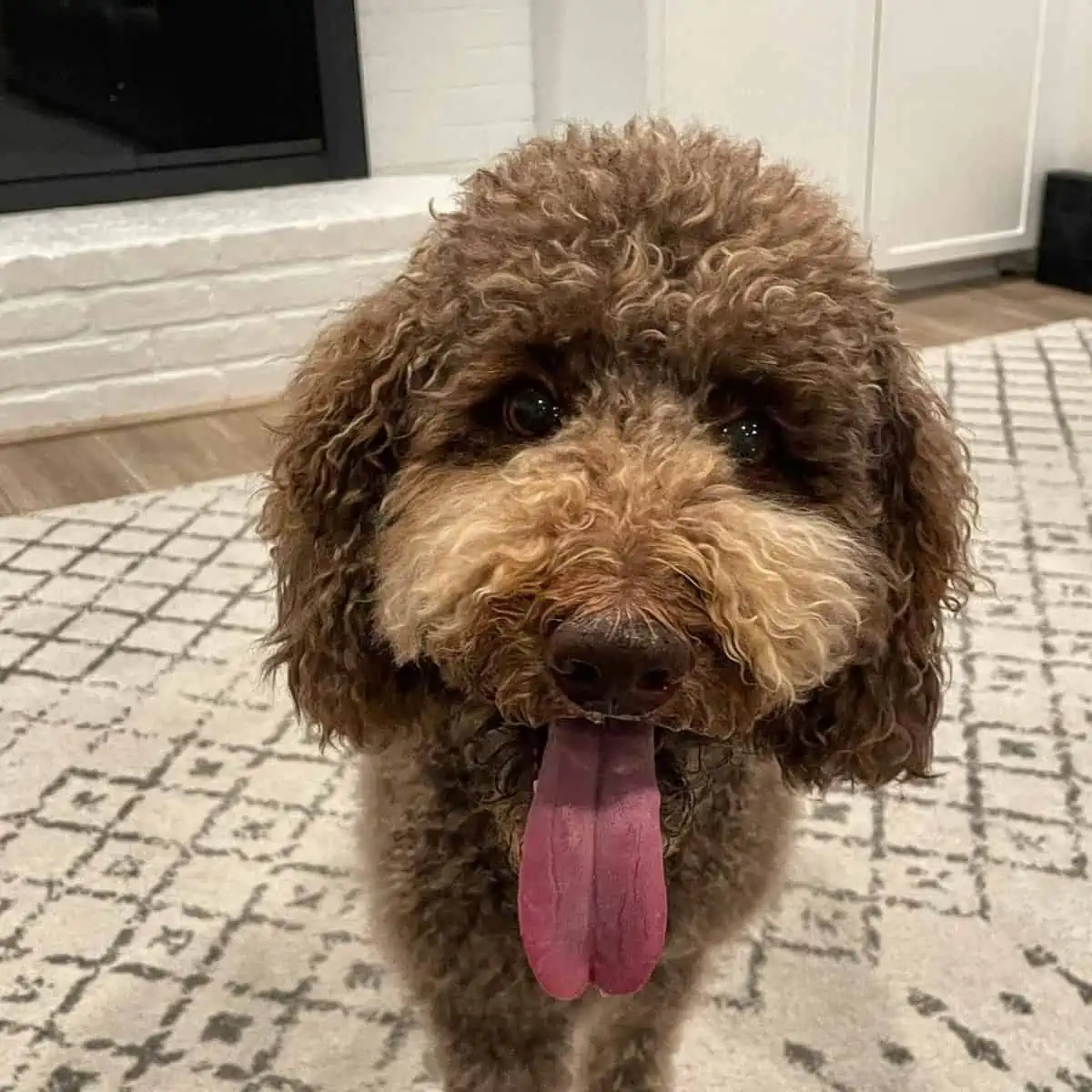
Command Training
This is the stage when you start teaching your Labradoodle some basic commands. “Sit” and “Come” are the quintessential training commands that you should begin with.
The best way to introduce it is during their mealtime. You can hold the food in your hands and use it to lure them. When you see the puppy following the food in your hands, enunciate the “Come” command. Before you hand over the food, say the word “Sit” and guide them to sit in the correct position.
Identify a definite marker that you can use to communicate to your Labradoodle if they perform a particular command correctly or incorrectly. “Good boy/girl” or a simple “Yes” are the most commonly used ones.
Important Training Tips For Your Labradoodles

#1. Sit with your Labradoodle on the floor and play around to try to communicate with them. Make them comfortable with your touch and sound.
#2. Find other puppies that your Labradoodle can spend time with. It is a good idea to begin socializing your puppy to help them become more comfortable with humans as well as other dogs. This will also reduce the risk of anxiety and fear, help them listen to others better, and ensure that they live a fulfilling and happy life.
#3. Regardless of what training routine you establish for your dog, make sure you only do it through positive reinforcement. Positive reinforcement is a reward-based training option. So, if your dog successfully performs a task or follows a command, you praise them or reward them with treats. You can use a favorite treat or a toy to encourage them to follow the command again. Avoid punishing your dog at all costs as it would instill life-long fear in them.
#4. Use puzzle toys and different mentally stimulating exercises to improve their physical and mental capabilities (even simple food toys like frozen Kongs or slow feeder bowls do the trick).
How To Prepare For Your Labradoodle’s Arrival?

I am sure you have been planning the arrival of your Labradoodle and are excited for all the joy and happiness they are about to bring into your life. I got a puppy a few months back too, and there are a few tips I wish someone had told me about before:
- Have two separate bowls ready for your Labradoodle – one for food and one for water. Feed them with food specific to their breed, and make sure to replace their bowl with fresh water every day. Proper nutrition and a balanced diet are part and parcel of a good puppy training routine.
- Look into suitable dog toys that can assist your Labradoodle’s cognitive ability and stimulate their brain. You can also treat them with a toy every time they follow the commands you teach them.
- Invest in a comfortable dog bed. Although bedding can be expensive, your Labradoodle needs a decent place to relax. Make sure the size of the bed is appropriate, neither too big nor too small.
- Puppy-proof your house before the new member settles in. Keeping the electrical cords out of reach, properly latching the doors and windows to avoid risking your puppy wandering off, and designating a specific bathroom area for the puppy are some of the vital precautions you must take. (Don’t forget to make your kitchen bin dog proof also).
Training a Labradoodle To Enjoy Grooming
Grooming is as important for your Labradoodle as feeding and exercise. It not only keeps them clean and smelling fresh but also eliminates the risk of illnesses and diseases in your dog.
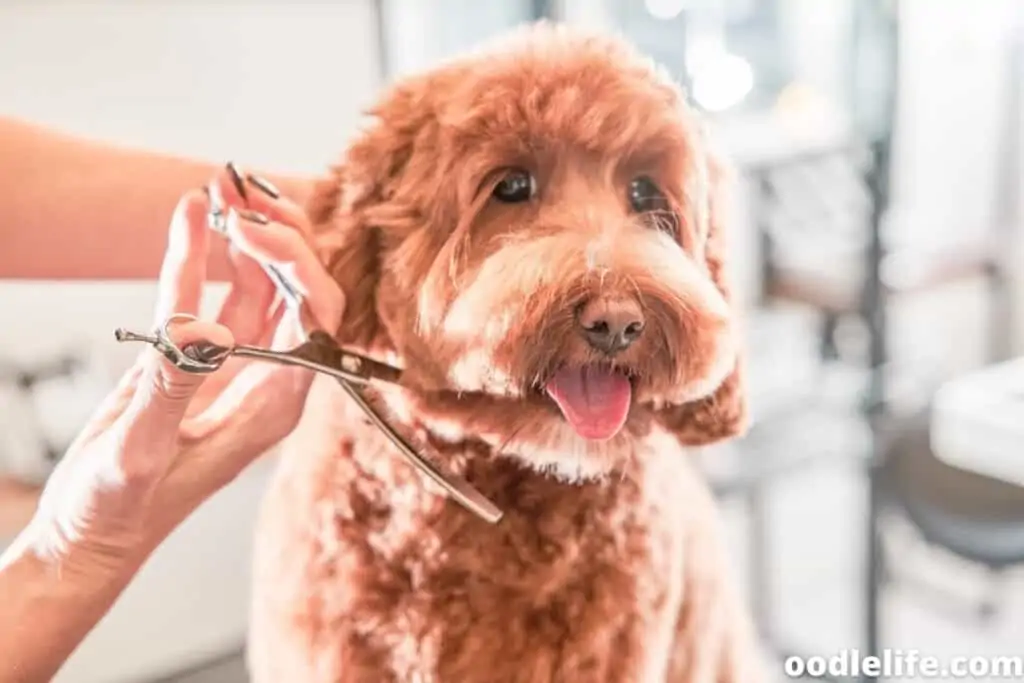
Luckily, because Labradoodles are hypoallergenic, they do not shed much fur. But they still need to be regularly groomed to avoid matting.
To do this, however, you need to train your Labradoodles to be comfortable with the different grooming tools and sit still for some time. Here are a few tips on how you can do that successfully:
1. Sensitize your Labradoodle to the sounds of different grooming equipment like nail trimmers, scissors, combs, brushes, etc.
2. Play with their paws and make them feel comfortable. You should massage their feet and touch their nails to make them feel at ease with your touch. This will help avoid fussy and chaotic grooming sessions when you trim your dog’s nails (and make sure you do it regularly).
3. The more you delay grooming your dog regularly, the more complex and painful the procedure will get. For example, brushing your Labradoodle’s coat every day, or at least a few times a week, will reduce the chances of matting or fleas accumulating on the skin. Brushing becomes easy, pain-free, and you will be surprised to see your Labradoodle eventually starting to look forward to it.
4. While doing facial trims, your dog needs to remain calm and still. To do a facial trim, gently hold their head in one hand and rest their chin on another. When the dog’s head is in a still position, calmly guide it from side to side as you trim and reward them for showing patience.
5. There are high chances your dog will be placed in a crate when attending grooming sessions at a salon. So make them accustomed to being placed inside a crate at home. You can keep their favorite toys and treats inside to make them feel more comfortable.
FAQs
When To Go For Advanced Labradoodle Training Options For Your Labradoodles?
Most of the advanced Labradoodle training options and methods are built on basic training methods. If your Labradoodle has successfully mastered basic training skills, the advanced training period will be relatively easy.
If you want your dog to behave even better and learn new tricks, or get them registered as a service dog or a guide dog, or make them participate in an upcoming dog event, you can consider enrolling them in professional advanced training courses.
A good course would involve advanced training commands like “steady” and “back up.” (An extension of the basic puppy manners (OSE.edu Vet School) that your Labradoodle should already have)
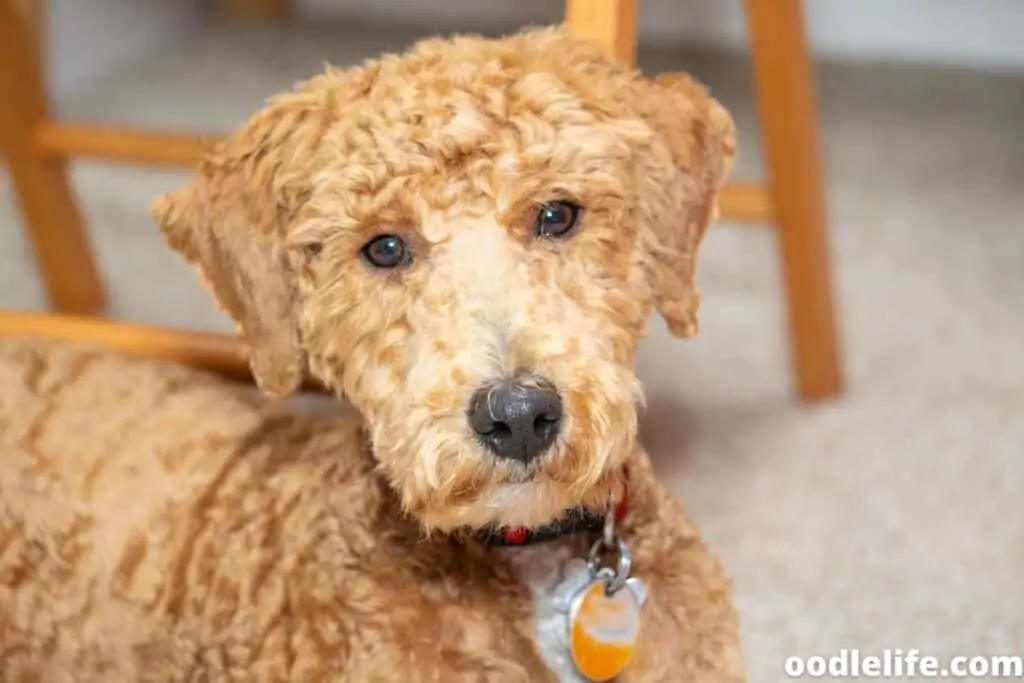
Does A Labradoodle’s Background Influence Their Training?
Labradoodles, as the name suggests, are a cross between Poodles and Labradors, combining the best characteristics of both breeds. Labradoodles are bred to be friendly and loving and they are very easy to train. In terms of background, if the breeder or adoption service you got your pup from did not start any training, then you will have to start slow and be patient.
A Labradoodle that has been trained and brought up well can serve as the perfect service dog, guide dog, or therapy dog.
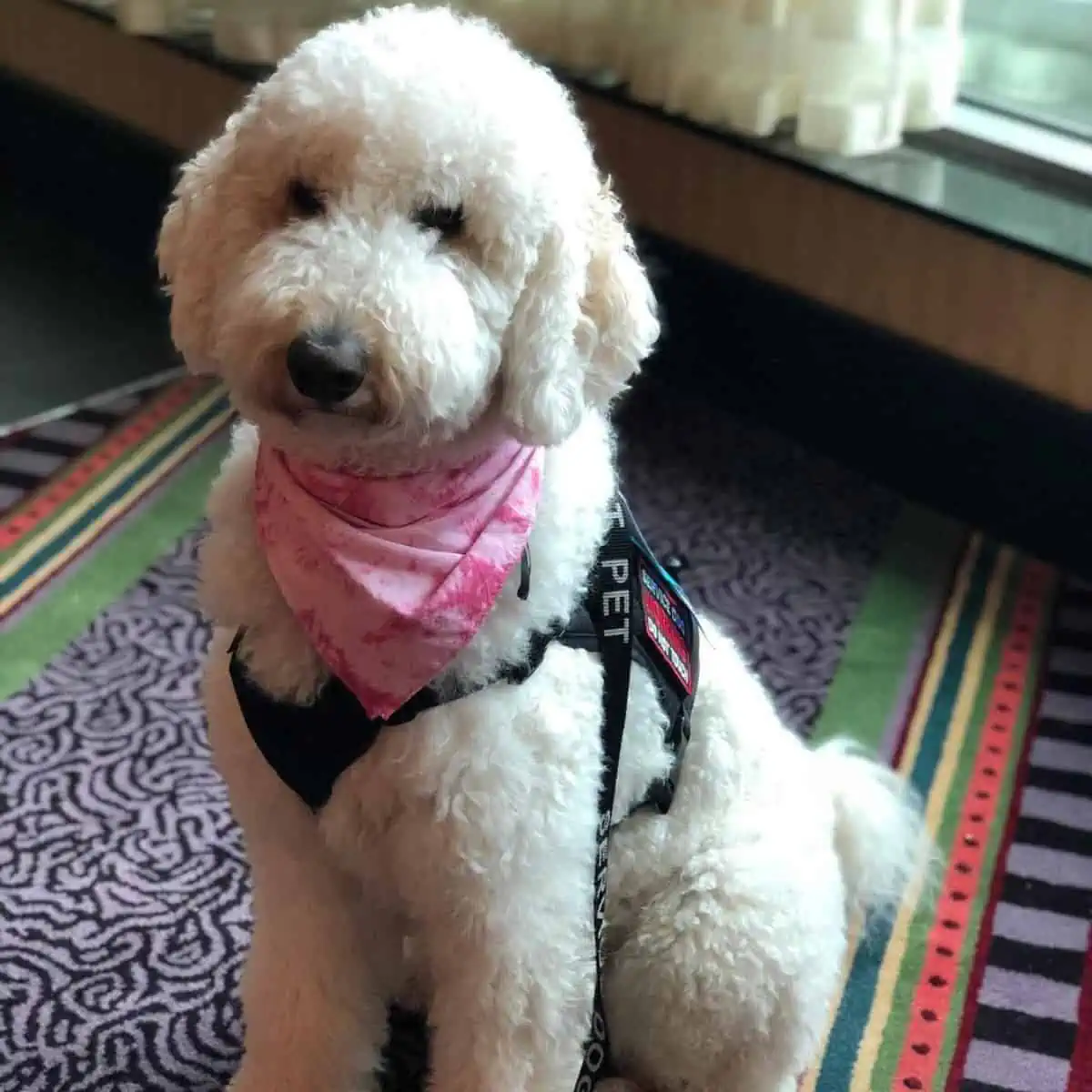
Are Labradoodles Easy To Train?
Absolutely! Labradoodles are great companions that can fit in as easily in a large family as they can in a small one. They are easy to train, friendly, social, and intelligent. If they are trained consistently, they develop a friendly temperament and bond well with their owners.

Do Labradoodles Bark Excessively?
As with any other breed of dog, Labradoodles are at high risk of barking excessively if they are not adequately trained or if their day-to-day requirements are not met. A Labradoodle has a lot of energy. If the energy is not channeled in the right place through coaching, exercising, and proper stimulation, they might get stressed and anxious and bark unreasonably.

Final Words
The happiness that comes with having a Labradoodle as your companion and raising them is unmatched. However, as with any other dog, training them involves hard work and discipline.
I hope this guide makes Labradoodle training easy for you. Labradoodle training involves multiple stages, and only when you understand your dog’s unique characteristics will you be able to hit the dog-parent jackpot.
The biggest hurdle you may face when training your dog is a lack of motivation and consistency. Luckily, Labradoodles are inclined to learn from their owners quicker than other breeds. So, with a bit of love and a lot of patience, you’ll be on your way to dog-training success.